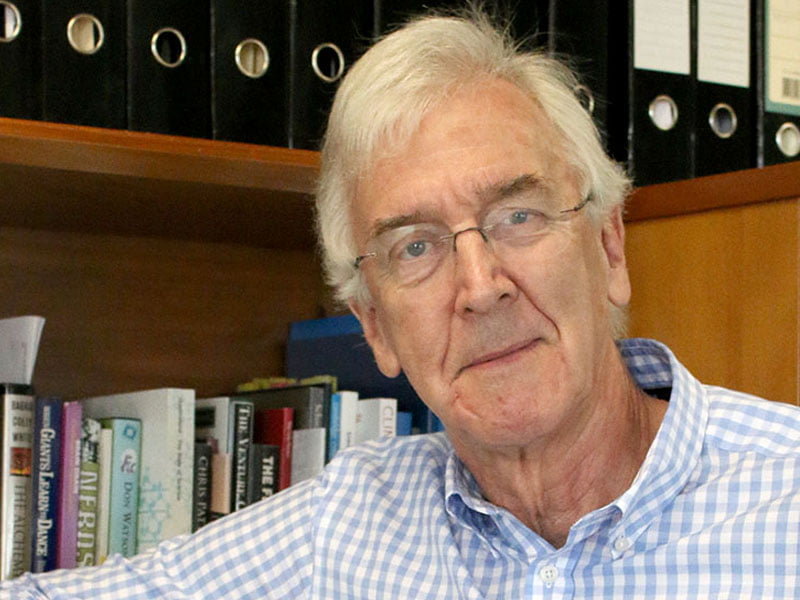Taking over where the former Premier Peter Beattie’s Smart State vision left off, Annastacia Palaszczuk’s Advance Queensland Program aims to make sure that Queensland stays on course to be more than just a ‘Sunshine State’.
The continuity of the program thinking is crucial, according to Queensland’s Chief Scientist Dr Geoff Garrett. And it remains a challenge for the state, which is hoping to leverage science, technology and innovation to build economic growth create new jobs.
The Advance Queensland Program builds on the former Smart State Vision. It is a comprehensive set of programs designed to encourage research and innovation, particularly in areas where the state considers it has a competitive advantage.

Its ultimate aim is help generate knowledge-based jobs and build prosperity.
Dr Garrett says the program aims to position Queensland as a place where entrepreneurs, industry, universities and government can collaborate to turn great ideas into commercial products and into businesses that create jobs.
An initial $18 million was parked under the Program when it was launched in July 2015, but it has since increased to $405 million over a four-year period.
“The Smart State initiative has continued in the Advance Queensland initiative,” said Dr Garrett.
“We want to build on the foundation that has been laid over the years. Research and innovation are front and centre of our government’s agenda, and help diversify an economy characterized by ‘rocks, crops and beaches’,” he said.
“Although time is tight, the government is responding timely and managing well.”
As the head honcho for all things related to science and technology, Dr Garrett provides leadership in science policy development and implementation, and offers high level, strategic advice to the Queensland Government on the role of innovation.
According to a Health of Queensland Science and Innovation 2016 report, STEM (science, technology, engineering, mathematics) qualified individuals have lower unemployment rates than those with lower qualifications – more so in Queensland than nationally. This is a problem.
In 2011 (latest census data), 20 per cent of Queensland’s workforce held a STEM qualification – of which 13 per cent were female rising to 28 per cent for those with university qualifications.
“A STEM education provides specific job-relevant knowledge, but also more general frameworks and approaches to tackle problem-solving,” said Dr Garrett.
“Hence, greater levels of STEM qualifications in the general population will help foster an innovation capable workforce critical to increasing productivity. Lifting the number of women with STEM qualifications would not only help improve their employment prospects but would also help increase workforce diversity, a driver of innovation.”
He asserts that the best place to develop a pipeline of STEM talent equipped with the new skills to take on economic challenges is in our own classrooms.
Some $3.3 million have already been invested in the Schools for the Future program to encourage students to study STEM, as well as the STEM.I.AM program which promotes to young Aboriginal and Torres Strait Islander students the study of STEM subjects.
He points out that STEM talent, however, is still very much ‘university-centric and are largely confined to academic circles’ – which is in stark contrast to many of the world’s leading innovative economies, like Finland and Denmark.
As the ambassador for Queensland science, Dr Garrett also wants to foster cooperation and collaboration between the government, research, industry and community sectors, as well as to raise Queensland’s profile as a smart region characterised by world-class research and investment opportunities.
Australia is lagging behind when it comes to the translation of research into real world and practical outcomes. Nailing it will bring the country closer to success.
“The low proportion of Australian researchers working in industry has implications both for uptake and application of new research findings but also for the identification of applied research priorities,” Dr Garrett said.
“It is important that we encourage and create policy settings that place university graduates and researchers in industry to be a productive research environment.”
As Queensland has invested heavily in previous years in science infrastructure and in developing a critical mass of researchers in priority areas, the state is gaining momentum and chalking up some lofty achievements by focusing on this solid scientific base.
One priority area is in biomedical and life sciences. Australian biotech firm Spinifex Pharmaceuticals was credited for developing the drug candidate EMA401, an oral treatment for chronic pain, particularly neuropathic pain (a type of nerve pain), without central nervous system side effects.
The founding technology was developed at the University of Queensland by Professor Maree Smith and Dr Bruce Wyse.
The discovery garnered international attention and in June 2015, Spinifex Pharmaceuticals was acquired by Novartis International AG for US$200 million. The total deal value could amount to US$700 million if future late-stage clinical trials prove successful.
The other areas where the state has identified as ‘priority and emerging industry’ sectors and is developing a series of roadmaps for each sector include: advanced manufacturing, aerospace, biofutures, defence and mining equipment, technology and services (METS).
These sectors are amongst the state’s largest employers and they rake in millions, if not billions, in revenues each year.
While Dr Garrett agrees that Advance Queensland and the National Innovation and Science Agenda have some overlap – which is by no means an accident – both are creating the right environment for innovation and entrepreneurship to flourish.
He is seeing a much more balanced approach for supporting R&D activities along the entire length of the commercialisation pathway.
“This new emphasis on innovation, entrepreneurship, and the ‘D’ component of ‘R&D’ will increase the chances of translation of our research and the commercialisation into goods and services,” he said.
“Now, let’s continue and keep up at it.”
Do you know more? Contact James Riley via Email.
